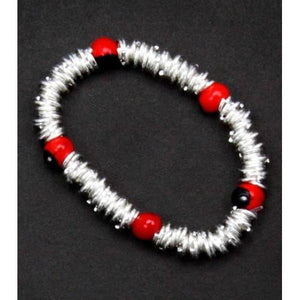Latest News Latest News
Know About Chakana (Inca Cross) Jewelry Know About Chakana (Inca Cross) Jewelry
Visit Peru, and you will come across the chakana everywhere, from paintings and pottery to textiles and jewelry. The symbol is also carved out at archaeological sites, such as the Chan Chan and Machu Picchu.
Whether you want to buy Peruvian-inspired chakana jewelry or are intrigued by this stepped cross symbol, we have got you covered. This article will take you through the Inca civilization’s one of the most enduring symbols – the chakana, also known as the Andean cross or the Inca cross.
Symbol of the Old Culture
The chakana is representative of the old Andes cultures. This holy, geometric design traditionally represents the Southern Cross constellation visible from the southern hemisphere.
The Andean aboriginals believed the particular constellation was the universe’s center.
The Chakana and its Corners
At the heart of the ancient Inca symbol is a circular hole representative of the city of Cusco, which was the Inca Empire’s capital. The circle is surrounded by four corners, and each corner is ridged with three steps.
The three steps of each corner represent the Inca belief system’s three worlds:
- The Ukhu Pacha or the underworld
- The Kay Pacha or the middle world
- The Hanan Pacha or the upper world
The snake represents the underworld; the puma represents the middle world or the world inhabited by humans; the condor represents the upper world or the realms of the Gods reside.
The three animals have a prominent place in the Inca artwork and architecture, along with the chakana. The Incans believed that when a person’s soul traveled to the underworld upon death, the puma descended to the Ukhu Pacha to collect the soul and take it to the condor. The soul then journeyed to the upper world with the bird.
Some believe each corner indicates the Inca culture’s values, like llankay or work, munay or love, and yachay or knowledge. One corner may represent the three commandments of not lying, not stealing, and not being lazy.
The chakana is also said to stand for the sowing and harvesting times and the four seasons. Some Andean communities celebrate May 2nd and 3rd as Chakana Day. On these days, the Southern Cross is directly pointed at the Southern pole, which marks the beginning of the harvest period.
The Chakana and Pre-Inca Cultures
History points out that the Andean cross symbol existed prior to the Inca civilization, too. The twelve-cornered design was occasionally seen in pre-contact artifacts like ceramics and textiles from Inca, Wari, Tiwanaku, and Caral cultures.
That is some exciting history, isn’t it? When in Peru, take a tour of the Museo Inca in Cusco for an immersive experience of the ancient Inca civilization.
In the meantime, order your Peruvian-inspired chakana jewelry online from Peru Gift Shop.
Visit Peru, and you will come across the chakana everywhere, from paintings and pottery to textiles and jewelry. The symbol is also carved out at archaeological sites, such as the Chan Chan and Machu Picchu.
Whether you want to buy Peruvian-inspired chakana jewelry or are intrigued by this stepped cross symbol, we have got you covered. This article will take you through the Inca civilization’s one of the most enduring symbols – the chakana, also known as the Andean cross or the Inca cross.
Symbol of the Old Culture
The chakana is representative of the old Andes cultures. This holy, geometric design traditionally represents the Southern Cross constellation visible from the southern hemisphere.
The Andean aboriginals believed the particular constellation was the universe’s center.
The Chakana and its Corners
At the heart of the ancient Inca symbol is a circular hole representative of the city of Cusco, which was the Inca Empire’s capital. The circle is surrounded by four corners, and each corner is ridged with three steps.
The three steps of each corner represent the Inca belief system’s three worlds:
- The Ukhu Pacha or the underworld
- The Kay Pacha or the middle world
- The Hanan Pacha or the upper world
The snake represents the underworld; the puma represents the middle world or the world inhabited by humans; the condor represents the upper world or the realms of the Gods reside.
The three animals have a prominent place in the Inca artwork and architecture, along with the chakana. The Incans believed that when a person’s soul traveled to the underworld upon death, the puma descended to the Ukhu Pacha to collect the soul and take it to the condor. The soul then journeyed to the upper world with the bird.
Some believe each corner indicates the Inca culture’s values, like llankay or work, munay or love, and yachay or knowledge. One corner may represent the three commandments of not lying, not stealing, and not being lazy.
The chakana is also said to stand for the sowing and harvesting times and the four seasons. Some Andean communities celebrate May 2nd and 3rd as Chakana Day. On these days, the Southern Cross is directly pointed at the Southern pole, which marks the beginning of the harvest period.
The Chakana and Pre-Inca Cultures
History points out that the Andean cross symbol existed prior to the Inca civilization, too. The twelve-cornered design was occasionally seen in pre-contact artifacts like ceramics and textiles from Inca, Wari, Tiwanaku, and Caral cultures.
That is some exciting history, isn’t it? When in Peru, take a tour of the Museo Inca in Cusco for an immersive experience of the ancient Inca civilization.
In the meantime, order your Peruvian-inspired chakana jewelry online from Peru Gift Shop.




